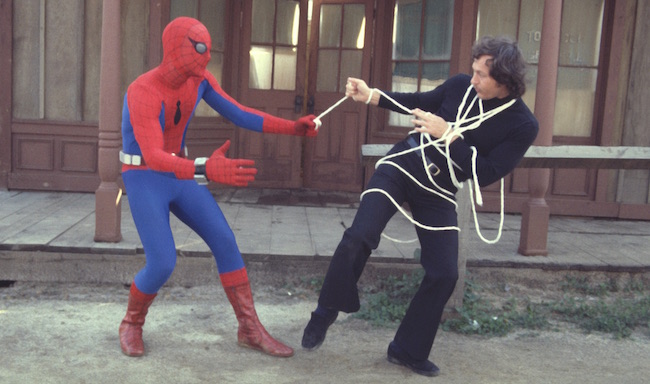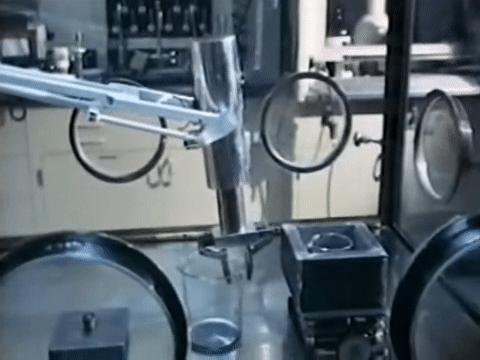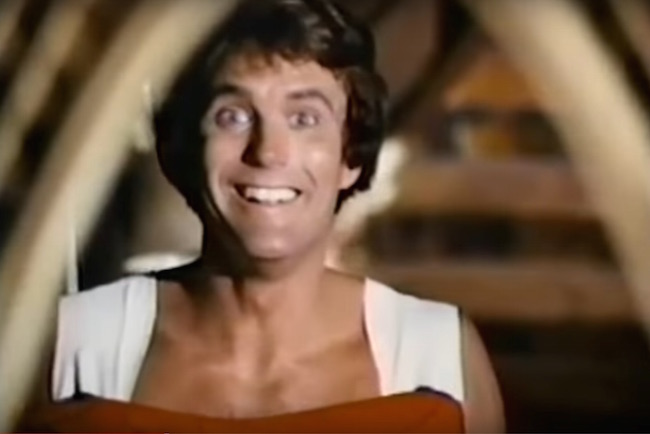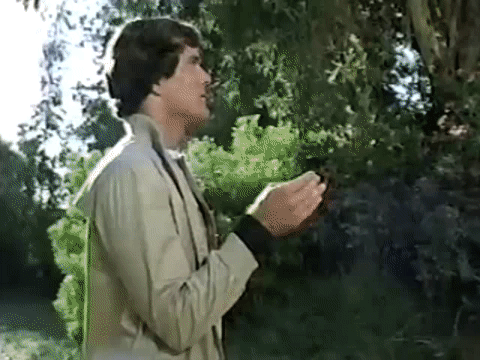
The fact there was a ‘70s era, made for television, kind of low rent version of the MCU (MTU?) is fascinating. It’s mostly fascinating because no one today really ever talks about any of this. I find myself returning to it because it just seems so strangely out of place for its era, but there they all are. There were Captain America TV movies, a Doctor Strange TV movie (a few years ago I wrote about this one), and of course The Incredible Hulk series that eventually spawned its own special that somehow featured Thor.
But, the property that both baffles and intrigues me the most is The Amazing Spider-Man, which aired sporadically on CBS from 1977 until 1979. Marvel’s most popular character had a live-action television series and it’s basically never talked about. I even remember when I was a little kid, these episodes would pop up from time to time as reruns, but I remember not being very interested, even though I loved Spider-Man. None of this makes sense! So, I decided to watch a good portion of the series. It’s very strange.
(So, I found myself thinking about it again after appearing on USA Today’s Mothership podcast last week to talk about Spider-Man: Far From Home. We were all asked to name our favorite Spider-Man actor and I said “Nicholas Hammond” from the CBS series just to throw an unexpected curveball. Of course, that led to me having to sort of explain that this show even existed. Fun Fact: Hammond plays Sam Wanamaker in Quentin Tarantino’s Once Upon a Time in… Hollywood.)
Looking back, it appears The Amazing Spider-Man suffered from trying to make everyone happy, which of course made no one happy – in that it’s not comic book-ish at all, so it would appeal more to the adults of that era, but that also means it’s not very interesting. The individual plots are pretty indistinguishable from any hour-long drama of that era. Basically any of these plots could have dropped into an episode of, say, Quincy, and it would have pretty much been a similar viewing experience – except instead of Spider-Man saving the day, it’s Jack Klugman. And Spider-Man, as we know, has a wealth of supporting characters and villains, yet The Amazing Spider-Man decided to use pretty much none of them except for a watered-down version of J. Jonah Jameson.
Watching the 90-minute pilot was, let’s say, challenging. It’s not bad, it’s just very deliberately paced. In the scene leading up to Peter (Hammond) being bitten by the radioactive spider, we watch a mechanical arm try to pick up a cup of radioactive liquid for what feels like an eternity. Perhaps in the ‘70s a robot arm was fascinating – “Hey, honey, you gotta come in here and look at what’s on TV! It’s a robot arm! Look at that thing!” – but watching today, it’s tedious. There are a lot of tedious scenes in The Amazing Spider-Man.

What The Amazing Spider-Man actually does a pretty good job of is creating a not half bad Daily Bugle office environment (at least in the pilot, going forward this element isn’t as prevalent). Hammond’s Peter reminded me a little bit of the “gosh, golly gee” attitude we see done to perfection by Christopher Reeve’s Clark Kent a year later in Superman. David White (probably best known as Larry Tate on Bewitched) plays J. Jonah Jameson and he’s not bad! And Hilly Hicks’ Robbie Robertson is there to both help Peter and kind of shake his head at Peter’s ineptness. Again, it’s a good dynamic. So of course after the pilot they recast Jameson with Robert F. Simon, who isn’t nearly as good, and the Robertson character never appears again.
And Hammond is maybe an odd choice for Peter. Though only 27 at the time, Hammond looks closer to 35 (I’ll chalk this up to everyone from that era looking a little older than they were — look at high school yearbooks from 1977, 18-year-old seniors all look 40), and could be the leading man on probably any show from that era, which is most likely why he was cast, but it’s a strange Peter. It’s briefly mentioned that Peter is trying to get his PhD, which is why he’s working with radioactive materials. And there are a few scenes here and there of Peter in class (in one he’s mad the university has plutonium on campus, which seems like a reasonable concern), but I guess there’s not a lot of room for flirting with Mary Jane or getting in fights with Flash Thompson when everyone is studying to be a doctor. Though, I did love this shot of Hammond’s somewhat joyous, somewhat crazed look after he makes his Spider-Man costume.

So, no, this is not a series interested in exploring Peter’s growth as a kid with extraordinary powers; instead it’s basically, “What would happen if a mature New York City businessman, and a future doctor, were given superpowers.” (Oh, that’s another thing, they keep talking about how they are in New York City, yet no series is more obviously filmed in L.A. than The Amazing Spider-Man.)
Oh yeah, this Spider-Man’s powers are kind of crazy. Or, maybe it would be better to say they are so not crazy, they seem crazy. Let’s put it this way, the incarnations of Spider-Man we are used to today are fast, swinging and flipping their way to victory. This Spider-Man crawls a lot. Like, very slowly. In the pilot (which is about a bad guy hypnotizing people to carry out crimes) a man threatens to jump out of a window. Well, not on Spider-Man’s watch! So we then get to see Spider-Man, very slowly, crawl up the building to rescue this man. We get the sense this Spider-Man is strong, but the show really just kind of harps on the fact Peter can crawl up walls as Spider-Man’s main power. Which, on its own, isn’t that interesting of a superpower. There’s one scene in the pilot where Spider-Man finds himself cornered by three evil henchmen. Spider-Man uses his powers to … run away from them.
Eventually, Peter builds himself a web shooter, but for some reason just one. Peter’s web shooter is my favorite aspect of this show. First of all, it less shoots “web” as much as it shoots “a rope.” And here’s that iconic scene of Peter trying out his new web by … kind of clumsily swinging on a tree?

Second, I love how meticulous the show’s production team was in that here’s Spider-Man, where we already have to accept a good amount of disbelief, but this web shooter has to be believable for some reason. In that Peter carries around a bunch of replacement web-shooting cartridges on both his shooter and a utility belt. I would have loved to be in the room during this argument.
“Hey, can’t we just say Peter’s web-shooter just doesn’t run out of rope?”
“What, that’s ridiculous, of course it does, which is why Spider-Man must carry approximately 70 replacement cartridges at all times.”
“But…”
“At all times!”
So, anyway, yes, I see why my younger self didn’t care too much about this incarnation of Spider-Man anymore than I cared about an episode of Trapper John, M.D. The “bad guys” were just normal people who dabbled in mind control (there are at least two episodes with this arc), or arms dealers, or security experts. Again, I’d also like to be in the room for that discussion.
“Hey, what if this episode we have Spider-Man fight the Green Goblin?”
“No, I think instead Spider-Man should have to deal with a woman who thinks her dead husband is haunting her.”
“Oh, now that’s good stuff.”
But it’s still fascinating that this existed at all: a live-action Spider-Man television show that featured a Spider-Man crawling – crawling very slowly – to eventually, any moment now, save the day.
You can contact Mike Ryan directly on Twitter.
